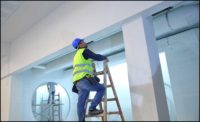Two big factors surrounding the concept of resilience are cost and payback period. Many owners would like to enhance the resilience of their buildings but don’t know if it makes economic sense. Overall, a 2018 report by the National Institute for Building Sciences (NIBS) found that a $1 mitigation investment returns more than $6 in benefits over the life of a structure. In the same vein, the Global Commission on Adaptation postulates a $7.1 trillion return on a $1.8 trillion investment globally over 10 years. These studies include not only the direct financial losses due to damage but also the social costs of lost productivity and health care. The societal benefits from investing in more resilient infrastructure have been extensively documented, but what about the payback for individual owners?
The Urban Land Institute looked at several buildings in a case study report, evaluating the resilience efforts on an economic basis. The results are quite intriguing.
Let’s first examine the Spaulding Rehabilitation Hospital in Boston. Due to its waterfront location, the hazards of concern are coastal storms, storm surge, and sea level rise. The enhanced resilience features for the hospital include an elevated first floor and mechanical systems, on-site cogeneration, and flood-proof vaults for diesel fuel, backup HVAC equipment, improved energy efficiency, operable windows, and landscaping features. One important attribute was to design the hospital to operate as an “island” for up to four days, continuing to provide services during that time while it was cut off from outside resources. In addition to the on-site power generation, this involved maintaining adequate supplies, including food for patients and staff. The increase in cost for these features was about $1.5 million, while the payback in the first year was $400,000, mostly from reduced energy costs. The actual payback period is therefore expected to be three to four years, which should be considered a very good investment for the owner.
Another interesting example of resilient design is the ENR2 building at the University of Arizona in Tucson. The hazards of the deserts in the Southwest are different than those on the East Coast and include intense rainfall, which could potentially lead to flash floods; extreme temperatures, both hot and cold; high winds; and extended drought. The design changes to enhance resilience are also different but with some similarities. Elevating the mechanical systems and providing on-site cogeneration made sense for the ENR2 building, just as they had for the Spaulding Rehabilitation Hospital. The major difference in the resilience approach was the use of passive energy designs to decrease reliance on external energy sources. For example, the building was designed around an interior courtyard to provide shading and increase air circulation, resulting in a 30% decrease in the need for air conditioning. The building was constructed out of concrete to provide thermal mass, which, along with shading and strategic placement of openings, provides relief from the extreme summer heat.
Building orientation was also considered. The sides experiencing the harshest exposure were bolstered with additional thermal mass and limited openings. These resilience features added about 2% to the total cost of construction with an expected 30% savings expected on energy costs alone.
These examples demonstrate that individual buildings can justify the increased costs for enhanced resilience. In addition to the economic justification summarized above, the building owners recognized their resilience efforts also improved the image of their organizations, which has proven to be a significant benefit. However, it is important to remember the resilience features, and, hence, the return on investment will be different for each situation. The needs and desires of each owner must be considered on a case-by-case basis. As engineers, it's our job to find solutions that increase building resilience while serving the best interests of our clients and the communities.





